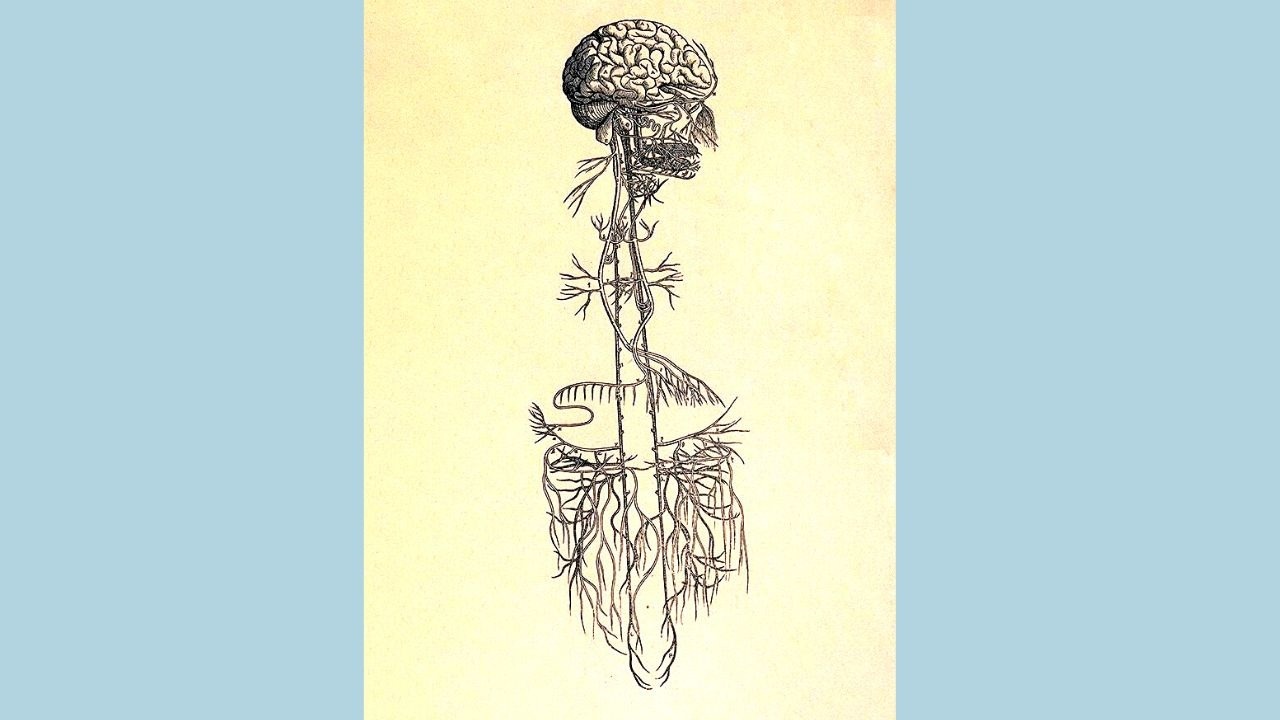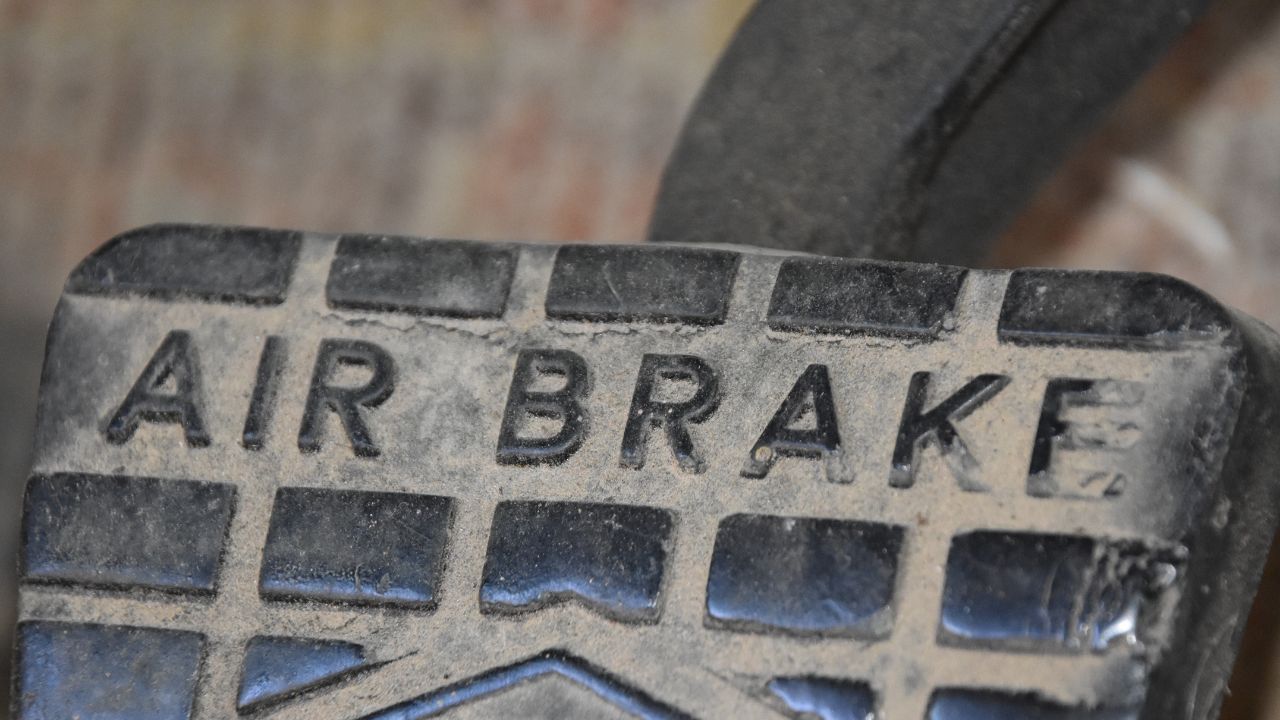Vagus Nerve Exercises for Stress and Anxiety Relief

Learn how to treat stress and anxiety naturally with these 8 easy exercises
If you’ve been experiencing more stress and anxiety as of late, you’re not alone.
According to the American Psychological Association, the stress and mental health statistics of the US are worsening significantly.
Fortunately, there are easy healing with sound exercises you can do for yourself right now that can make a big difference.
That’s why I want to show you why you should consider adding a vagus nerve exercise to your day.
Not only can it help you to quickly calm stress, but vagus nerve exercises are easy to do and take very little time.
Now, if you’re thinking to yourself: “Wait.. what’s a vagus nerve and why do I need to exercise it?”
Let me explain.
What is the vagus nerve?

The vagus nerve is an important part of our body that helps regulate many functions like regulating stress and anxiety.
Also called the “wandering nerve,” the vagus is the longest nerve in your body.
It begins at the bottom of your brain stem and travels through your body, touching every major organ, and stopping at your abdomen.

Simply put, the vagus nerve is an elaborate pathway that connects the brain to the body. It originates in the brain and travels throughout the neck and torso connecting each bodily system along the way.
Your vagus nerve is a lot like a thermostat… It automatically kicks on to keep everything in perfect balance. And research has shown that the vagus nerve is vital to many of the crucial, yet delicate, processes in the body, including:
- Blood sugar
- Blood pressure
- Inflammation
- Free radicals
- Oxygen levels in your blood
- Stress and calm inducing chemicals
Think of your vagus nerve as your body’s neurochemical “superhighway”—carrying signals between the brain and your vital organs.
One of the most important of these signals determines whether your body goes on high alert or remains calm. When you’re stressed or frightened, the vagus nerve signals for your sympathetic nervous system to rev into high gear. Kind of like the gas pedal in a car.

This part of your nervous system heightens your awareness and prepares your body to go into “fight or flight” mode and chemicals like adrenaline flow through your body.
When your body is calm, your parasympathetic (or “rest and digest”) system is dominant.
Think of it as the brake pedal on a car. Achieving this state is ideal as it reduces stress, regulates your blood pressure, and slows your heart rate. It also helps the body focus on healing.

When you stimulate your vagus nerve, your body produces those “feel good” chemicals that help it to relax—including oxytocin, dopamine, and endorphins.
And the more time we spend engaged with our parasympathetic nervous system, the healthier we are. Our breathing calms, our heart rate slows, we repair muscles, build strength, make hormones, and digest our food.
The great news is that an increasing number of studies show that sound based vagus nerve exercises—like the ones I’ll teach you in this guide, can help you:
- Decrease pain
- Improve nervous system function
- Lessen symptoms of depression and lift mood
- Lower blood pressure
- Manage stress
- Promote deep, restorative sleep
- Reduce anxiety
- Strengthen vagal tone—a key measure of your resilience to stress
Here are a few highlights from the latest research on the major benefits of using a vagus nerve exercise in your daily routine.
- In a 2018 study published in Frontiers in Psychiatry, researchers found that after just three months of vagus nerve stimulation, study participants suffering from depression saw a remission rate of 17 percent. And after one year of treatment, the remission rate rose to 33 percent.
- Studies in the Journal of Natural Science, Biology, and Medicine have shown that vagus nerve stimulation increases neurogenesis—the formation of new brain cells—in the hippocampus, a part of the brain that plays a critical role in learning and memory.
- In another 2018 study published in the Journal of Traditional and Complementary Medicine, 54 participants regularly performed a vagus nerve stimulation technique for three months, resulting in an 81 percent reduction in hyper reactivity (stress-induced blood pressure changes) and significantly lower diastolic blood pressure numbers.
Despite their ancient origins, healing sound exercises that utilize the vagus nerve are finally being "rediscovered" by modern medicine and not a moment too soon!
But even if you aren’t currently suffering from an injury or health ailment, you can still reap the benefits of vagus nerve exercises especially if you want to enrich your health.
Now I’d like to show you how to do my favorite “at home” vagus nerve exercises.
How Much Better Could You Be Feeling?
Find out with my "Healing with Sound" Mini Course: 100% Free. No Credit Card Required.
Discover how healing with sound can easily restore wellbeing and peace of mind—in minutes.
Get lifetime access to a potent daily sound healing exercise to erase stress, silence racing thoughts and restore your peace of mind in minutes.
Vagus Nerve Exercise 1: Brain Humming
How to do the Brain Humming Technique
- Focus your attention on the top of your head. Feel free to place your palm on the very top of your head. This so you can feel the vibration I mentioned a moment ago.
- Next, please keep your back molars and lips together. Doing so sends sound vibration directly up into your brain.
- Now, inhale a full breath and gently exhale the sound of the letter “M” for the complete exhalation. Remember to keep your back molars and lips together.
- The more sound you make, without straining your voice, the better the technique works.
- Repeat 4 -8 times if you can. Less is OK too.
- When you're done, just breathe at your normal pace and relax for 30 seconds.
- Notice how you feel in your mind, body and mood.
- If you’d like to deepen the experience, feel free to do several more repetitions of Brain Humming.
When I've taught vagus nerve exercises like Brain Humming to others over the years, the most common responses I’ve heard include:
- Feeling a “buzzy” feeling in your head from the vibration.
- Yawning.
- Mental clarity.
- A sense of peacefulness.
- Feeling deeply relaxed or energized or both simultaneously.
Now if you feel nothing yet, don’t worry, you’re not broken!
You might need to try:
- Using a little more vocal volume.
- Increase the number of repetitions of the exercise.
- Turning off all external distractions.
- Focusing all of your attention on the feeling of the vibration as you make the sound.
Vagus Nerve Exercise 2: "Slow Breathing using a 2 to 1 ratio"
Simply put, 2:1 breathing is exhaling for twice as long as you inhale.
- Breathe slow and deep into your belly for about four seconds.
- Then exhale for about twice as long.
- Repeat for two minutes, or longer as you like.
- Feel free to adjust how many seconds you inhale according to what feels most comfortable to you.
Vagus Nerve Exercise 3: Cold water "therapy"
Splash your face or shower with cold water. This ancient Chinese remedy has been shown to stimulate the vagus nerve and lower your sympathetic response.
- Splash your face with very cold water 3-10 times.
- Slowly turn on colder water in the shower.
- Put a cold pack on your chest.
- Doing so helps wake up the nervous system and may strengthen vagal tone. (2008) Aviat Space Environ Med.
Vagus Nerve Exercise 4: Gargle
The act of gargling will stimulate the vagus nerve connected to your vocal cords. Start with 10 seconds each time you have a glass of water and gradually work your way up to 30 seconds. (2020) J Voice
Vagus Nerve Exercise 5: Sleep on your right side
You can literally do vagus nerve exercise in your sleep! Sleeping on your right side has been shown to increase heart rate variability and stimulate the vagus nerve. This study shows how sleeping on your right side helps people with coronary artery disease. (2008) Circ J.
Vagus Nerve Exercise 6: Spend time with your pet
Spending time with animals has been shown to induce calm, happiness (2019) J Am Psychiatr Nurses Assoc. And to positively affect heart rate variability—a key indicator of vagus nerve health. (2019) Int J Environ Res Public Health
Vagus Nerve Exercise 7: Immerse yourself in beauty
Watching the sunrise or sunset, taking a walk near trees or water, looking at beautiful art or even turning on nature videos all help generate a positive state of mind, which helps to improve vagal tone. (2013) Psych Sci.
Vagus Nerve Exercise 8: Be social
Connect with loved ones. Laughing, hugging, and smiling release our feel-good chemicals (oxytocin, dopamine, and serotonin). These relieve stress and strengthen the activation of your parasympathetic response.
Remember, vagus nerve exercises are not “one and done” activities—nor is it necessary to carve an extra hour out of your day to do this.
Simply aim to integrate a few of the suggestions above throughout your day, and you’ll reduce your stress and anxiety with very little “extra” effort.
Remember, that it’s important to give these methods a chance to work by trying them out on multiple occasions — at least five times — before deciding whether they are for you or not.
🧐 Curious? Try This 12 Minute Sound Based Vagus Nerve Stimulation Exercise Right Now For Free!
FDA Compliance: The information on this website has not been evaluated by the Food & Drug Administration or any other medical body. We do not aim to diagnose, treat, cure or prevent any illness or disease. Information is shared for educational purposes only. You must consult your doctor before acting on any content on this website, especially if you are pregnant, nursing, taking medication, or have a medical condition.
The material provided on this site is for educational purposes only and any recommendations are not intended to replace the advice of your physician. You are encouraged to seek advice from a competent medical professional regarding the applicability of any recommendations with regard to your symptoms or condition.
Copyright © 2022 by Blue Beat Media. Thank you for your interest in Jim Donovan / Jim Donovan Music. We do not allow republication of our full newsletters and articles. However, you can post a portion (no more than 90 words, 1-2 paragraphs) of our content with a live link back to our homepage, donovanhealth.com, or a link to the specific article you are quoting from.
About the author:
Jim Donovan M.Ed. is a multi-platinum musician, educator and TEDx speaker.
His mission is to share the restorative power of music through education and performance.
Donovan is an Assistant Professor and Director of Music and Wellness at Saint Francis University.
His viral TEDx Talk "How to Trick Your Brain Into Falling Asleep" has been viewed over 6 million times to date.
He currently performs with his band The Sun King Warriors who can best described as as a blend of rhythm heavy roots rock, with a strong dose of big barreling drums.
Jim Donovan got his start as a founding member and drummer of the multi-platinum selling band Rusted Root.
There he co-wrote the song “Send Me on My Way” featured in the movies "Ice Age", "Matilda" and the Netflix series "New Girl".
During his time with the band 1990-2005, he recorded and released seven full length albums. Including "When I Woke" (3x platinum).
He also had the honor of sharing the stage with many of his musical influences and heroes including Robert Plant and Jimmy Page of Led Zeppelin (1995 US/UK tour), Carlos Santana (1997/2002 US tour), The Allman Brothers Band (1995/96 US tour), The Grateful Dead (1995 Three Rivers Stadium in Pittsburgh, PA) and many others.
Send Me On My Way also became the first song on Mars where it “woke up” NASA’s Mars Rover.



